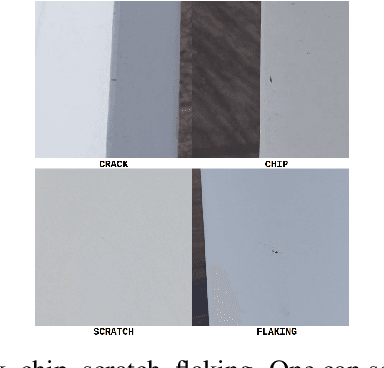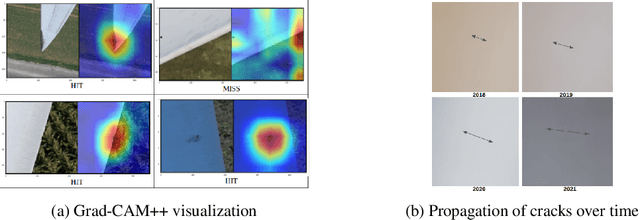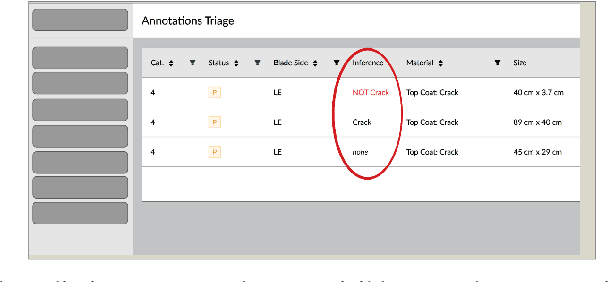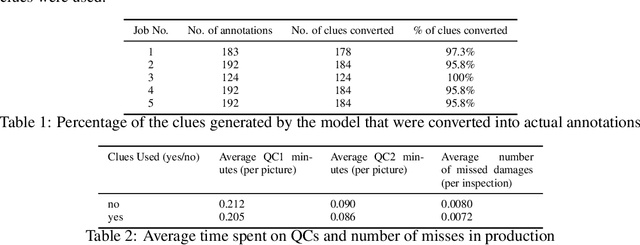Shweta Khushu
Learning to identify cracks on wind turbine blade surfaces using drone-based inspection images
Jul 20, 2022



Abstract:Wind energy is expected to be one of the leading ways to achieve the goals of the Paris Agreement but it in turn heavily depends on effective management of its operations and maintenance (O&M) costs. Blade failures account for one-third of all O&M costs thus making accurate detection of blade damages, especially cracks, very important for sustained operations and cost savings. Traditionally, damage inspection has been a completely manual process thus making it subjective, error-prone, and time-consuming. Hence in this work, we bring more objectivity, scalability, and repeatability in our damage inspection process, using deep learning, to miss fewer cracks. We build a deep learning model trained on a large dataset of blade damages, collected by our drone-based inspection, to correctly detect cracks. Our model is already in production and has processed more than a million damages with a recall of 0.96. We also focus on model interpretability using class activation maps to get a peek into the model workings. The model not only performs as good as human experts but also better in certain tricky cases. Thus, in this work, we aim to increase wind energy adoption by decreasing one of its major hurdles - the O\&M costs resulting from missing blade failures like cracks.
An Automated System for Detecting Visual Damages of Wind Turbine Blades
May 22, 2022

Abstract:Wind energy's ability to compete with fossil fuels on a market level depends on lowering wind's high operational costs. Since damages on wind turbine blades are the leading cause for these operational problems, identifying blade damages is critical. However, recent works in visual identification of blade damages are still experimental and focus on optimizing the traditional machine learning metrics such as IoU. In this paper, we argue that pushing models to production long before achieving the "optimal" model performance can still generate real value for this use case. We discuss the performance of our damage's suggestion model in production and how this system works in coordination with humans as part of a commercialized product and how it can contribute towards lowering wind energy's operational costs.
Powering Effective Climate Communication with a Climate Knowledge Base
Jul 23, 2021


Abstract:While many accept climate change and its growing impacts, few converse about it well, limiting the adoption speed of societal changes necessary to address it. In order to make effective climate communication easier, we aim to build a system that presents to any individual the climate information predicted to best motivate and inspire them to take action given their unique set of personal values. To alleviate the cold-start problem, the system relies on a knowledge base (ClimateKB) of causes and effects of climate change, and their associations to personal values. Since no such comprehensive ClimateKB exists, we revisit knowledge base construction techniques and build a ClimateKB from free text. We plan to open source the ClimateKB and associated code to encourage future research and applications.
 Add to Chrome
Add to Chrome Add to Firefox
Add to Firefox Add to Edge
Add to Edge